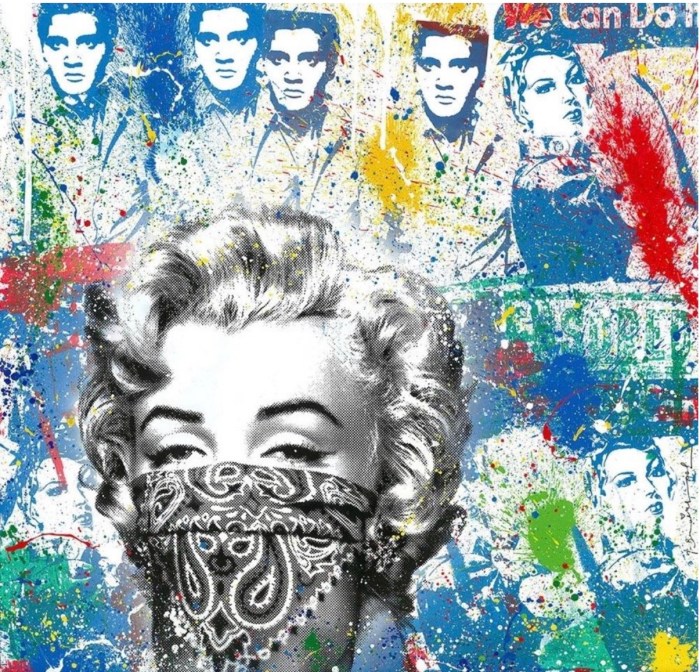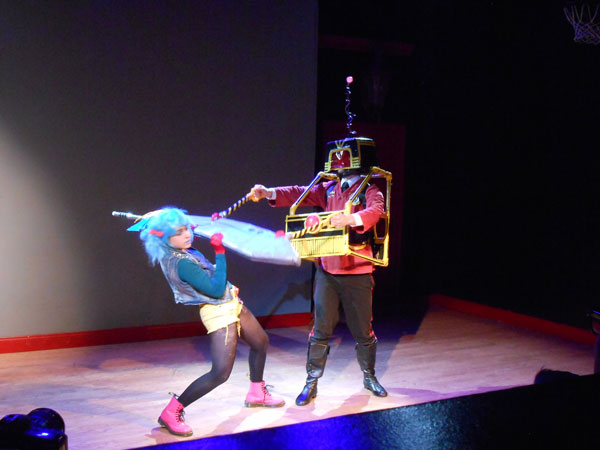
BY CHARLES BATTERSBY | Dedicated theatergoers will boast that they sat through epic plays like “Long Day’s Journey Into Night,” the unedited “Hamlet” or “Angels in America” — but there is a show running Off-Off Broadway that tasks audiences with a four and a half hour adventure performed in a single afternoon. What’s most remarkable is that it isn’t longtime theater enthusiasts in the audience — it’s fans of cartoons and video games who join the character of Kapow-i GoGo on her afternoon-long adventure.
The stage show of the same name, “Kapow-i GoGo,” is a loving homage to video games and cartoons, especially Japanese ones from the ’90s. The title character is a pastiche of heroines and heroes from anime shows and the Nintendo franchise — equal parts “Pokemon,” “Dragon Ball Z,” “Legend of Zelda,” “Final Fantasy” and a heaping dose of “Sailor Moon.”
There is a generation of young theater fans who grew up with these characters, watching Sailor Moon defend the Moon Kingdom before school, seeing Goku battle Vegeta every weekday afternoon, and staying up all night trying to reach the final disk of “Final Fantasy VII.” Those kids are adults now, and they crave not only nostalgia from their childhood, but also deconstruction of these classics.
We spoke with playwright Matt Cox, co-director Kristin McCarthy Parker and star Madeleine Bundy about their show. Matt Cox describes it as “An amalgamation of everything I loved as a fourteen-year-old. It’s this big epic journey and adventure that you get to take an audience on for four and a half hours.”
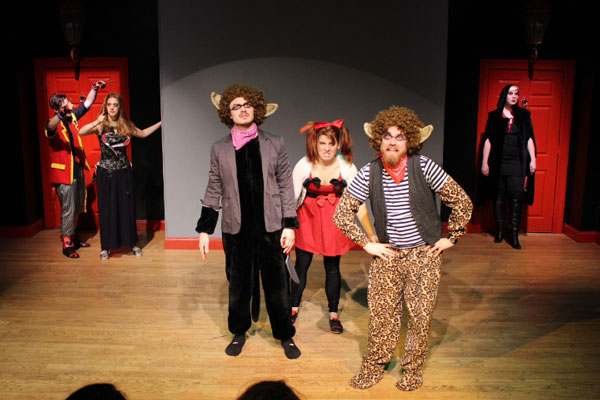
Bundy describes her character, Kapow-i, as “Every protagonist you see in video games and cartoons. She represents not just these female heroes, but just heroes. Whatever you grew up with, whether it was something from ‘’Star Trek,’’ ‘’Star Wars,’’ anime, or ‘’X-Men,’’ you can project your ideal hero onto her.”
The show began in a weekly serialized format, performed with one short episode per week. In its current format, all of those episodes have been combined together, along with new material. “There is a novelty that we have,” says Bundy about the episodic format, similar to “binge watching on Netflix. People love sitting at home on their couch and watching an entire season in an afternoon.”
The most recent marathon performance occurred on a Saturday afternoon, McCarthy Parker explains. “We settled on treating it like Saturday morning cartoons, so that we could be in the afternoon and not take up a person’s entire Saturday or Sunday evening.”
To enhance that “Saturday Morning” feeling, the lobby of the theater has a cereal bar, and attendees can munch on sugary cereals during intermission between episodes. The producers even created collectible trading cards featuring their characters; the sort of item that would be included with toy action figures. “All of this is to create an atmosphere of nostalgia,” says McCarthy Parker.
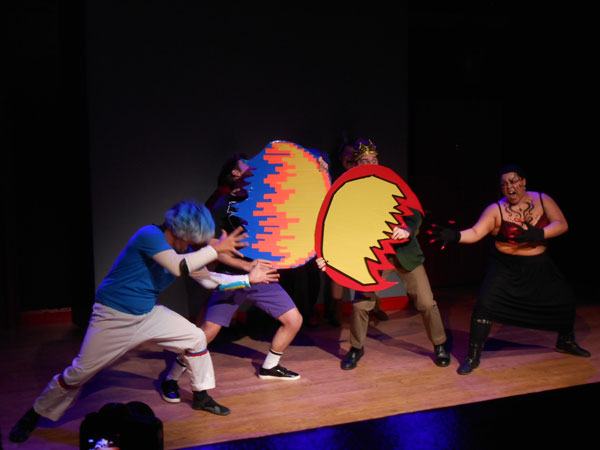
Despite the nostalgic sweetness, the show takes some very dark turns in its later parts. The story sends Kapow-i and her friends on a series of heroic journeys over the course of 30 years. At first, the gang lives in a colorful, child-like world. As the third hour approaches, the themes become darker, reflecting the more mature anime that became popular in America as the ’90s stretched on. In the final story arc, Kapow-i’s whimsical world transforms into a dark dystopia, and she herself becomes an antihero who is part Sarah Connor, part Ellen Ripley, and part “Future Trunks” from “Dragon Ball Z.”
McCarthy Parker points out that Kapow-i’s audience is made of people who are more likely to go to Comic Con than a Broadway show. “People go to the theater with the expectation that they’re going to sit in their seat and be respectful, and we’re trying to break that a little bit. We’re able to do that because we’re at a comedy theater, with a bar in the lobby. That’s fun and refreshing for people who don’t have the most experience with theater, or the most positive relationship with theater.”
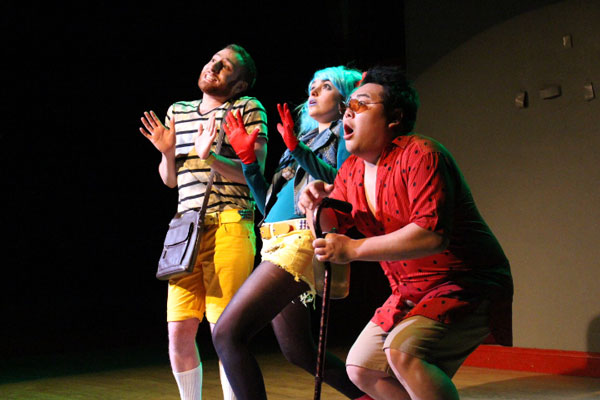
The entire team laughed as Matt Cox recalled how, at one performance, the audience made liberal use of the bar during the show’s many short intermissions. “The first time we did the show as a marathon, we did it at night. We started at seven or eight, and went until one. At that show, the audience was particularly intoxicated, and they had a GREAT time.” Bundy noted that audiences at afternoon shows are more “respectfully tipsy.”
However, drinking is a not a requirement to enjoy Kapowi-‘s adventure. All it takes is an enduring love of classic anime and video games.
“Kapow-i GoGo” will return to the Peoples Improv Theater (123 E. 24th St, btw. Park & Lexington Aves.) on Sat., Aug. 29 for another marathon matinee, beginning at 1 p.m. Visit kapowigogo.com for info and tickets ($30).










